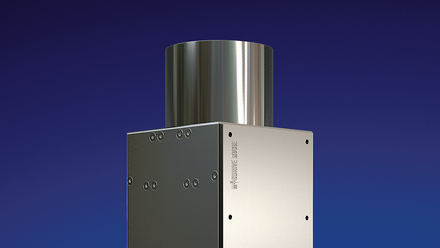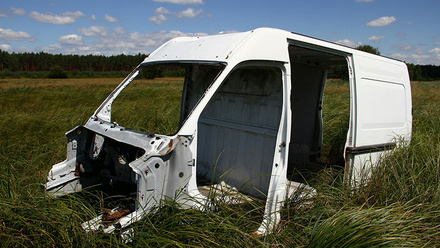Metal-free CFRP rocket tank survives cryogenic fuels, reduces weight
Future rockets could fly with tanks made of lightweight carbon fibre reinforced plastic – making cryogenic propellants a possibility.

MT Aerospace tested the strength of a subscale oxidiser tank made from carbon-fibre reinforced plastic
© ESAResearch carried out within ESA’s Future Launchers Preparatory Programme has built on earlier studies allowing MT Aerospace in Germany to demonstrated a novel design of a small scale tank made of a carbon fibre reinforced plastic (CFRP) that is not only leak-proof with liquid hydrogen, but also compatible with liquid oxygen, without the use of a metal liner.
A tank made solely of CFRP is much lighter than metal, requires fewer parts and is therefore faster and cheaper to manufacture. This is a big leap as normally, storage of cryogenic propellants such as these which are cooled to -253˚C requires tanks with metallic liners to make them leak-proof, with or without a composite overwrap.
Hans Steininger, CEO at MT Aerospace says, ‘We have provided proof that a high-performance pressure tank made of CFRP can withstand cryogenic stress. In the future, the use of CFRP high-performance tanks should not only enable safe rocket launches, it can also exploit the advantage of significantly lower mass compared to metallic tanks.’
‘We have found a very specific carbon composite and processing method that will allow us to consider new architectures and combinations of functions for rocket upper stages which are not possible using metal,’ adds Kate Underhill, Upper stage and propulsion demonstrators project manager in the Future Launchers Preparatory Programme at ESA.
Small-scale tank demonstrators with integrated thermal protection will soon be built for further testing. Data collected will feed into development of a full-scale demonstrator of a future highly-optimised upper stage, called Phoebus.
Phoebus will have 3.5m diameter hydrogen and oxygen tanks, thermal protection, structural assembly elements and feature new technologies in avionics, structures and propulsion equipment. CFRP will be applied in the tanks, the interface structure between the two tanks and the outside cylinder representative of the upper stage outer skin.
The Phoebus demonstrator will be tested with cryogenic fluids in 2023 to confirm the functional performance of the technologies and new cost-efficient production methods as part of a new contract to advance the development of highly optimised upper stages. Ultimately that means the carbon-based material would allow the manufacture of an Ariane 6 upper stage that is two tonnes lighter.







